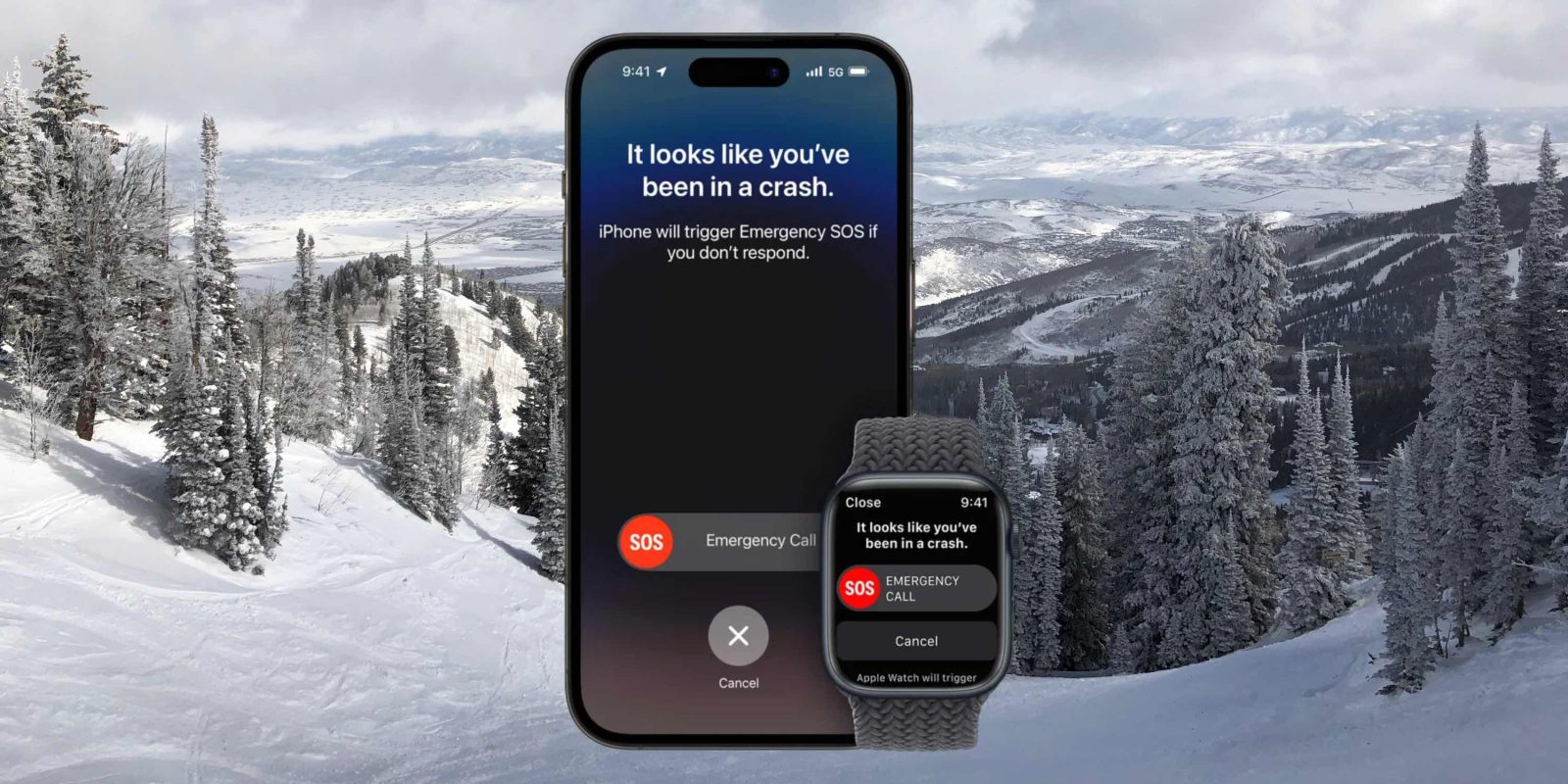
A number of recent stories have shed light on the growing pressure that false Emergency SOS calls from iPhone and Apple Watch are putting on 911 dispatchers and first responders. The New York Times is the latest to report on this issue, with a focus on false alarms from iPhone and Apple Watch users skiing in Colorado.
iPhone Crash Detection complaints mount
This is a topic that has been reported on in the past. In November, a report said that skiiers in Park City, Utah had been unknowingly triggering Crash Detection while skiing and snowboarding. Crash Detection is a new feature exclusive to the iPhone 14 and Apple Watch Ultra that can detect when it thinks you’ve been in a car accident, then call emergency services on your behalf.
In this latest report from The New York Times, dispatchers for 911 say they are becoming increasingly inundated with “false, automated distress calls from Apple devices owned by skiers.” In Summit County, Colorado, for example, first responders say these false alarms could “desensitize dispatchers and divert limited resources from true emergencies.”
“My whole day is managing crash notifications,” said Trina Dummer, interim director of Summit County’s emergency services, which received 185 such calls in the week from Jan. 13 to Jan. 22. (In winters past, the typical call volume on a busy day was roughly half that.) Ms. Dummer said that the onslaught was threatening to desensitize dispatchers and divert limited resources from true emergencies.
“Apple needs to put in their own call center if this is a feature they want,” she said.
This Summit County call center alerted Apple to this problem, and the company sent four representatives to observe the team for a day. In a statement, Apple spokesman Alex Kirschner said:
“We have been aware that in some specific scenarios these features have triggered emergency services when a user didn’t experience a severe car crash or hard fall.” The company noted that when a crash is detected, the watch buzzes and sends a loud warning alerting the user that a call is being placed to 911, and it provides 10 seconds in which to cancel the call.
Apple also said that updates to the software late last year had been intended to “optimize” the technology and reduce the number of false calls. Mr. Kirschner added, “Crash Detection and Fall Detection are designed to get users help when they need it most, and it has already contributed to saving several lives.”
Skiiers, however, say they don’t realize when the feature has been triggered because of the multiple layers of clothing they wear. Because of this, some ski resorts are now putting signs at ski lifts and ticket offices “alerting Apple Watch and iPhone 14 users to the problem and encouraging them to upgrade to the latest software version or disable the service.”
Dispatchers in Summit County also say they “very rarely” receive false calls from Android devices:
In Colorado, call dispatchers had trouble recalling an instance in which a watch had saved a skier in distress. (Ms. Dummer added that her team had “very rarely” received false 911 calls from other companies’ devices, such as Android phones.)
The report continues:
Just before noon, Mark Watson, a sergeant with the sheriff’s office, walked into the dispatch room looking glum. “This is not a good day,” he said.
“I wanted to check the numbers,” he said. “I was writing a letter to Apple.” He described his basic message to the company: “I’m struggling to get my daily job done. I don’t have all day to do Apple products.”
The full report can be found on the New York Times website. The report is largely in line with similar reports from other outlets. The takeaway seems to be that these types of stories will continue and that Apple’s early efforts at curtailing the problem don’t seem to have been as successful as needed.
- iPhone crash detection feature makes 100 false calls in a month to Japanese Alps emergency services
- Crash Detection false alerts from skiers and snowboarders stressing emergency services
- Some first responders are asking iPhone users to disable Emergency SOS and crash detection due to influx of false positives
- Skiers accidentally setting off iPhone 14 Crash Detection, dispatcher says to leave the feature on
FTC: We use income earning auto affiliate links. More.



Comments